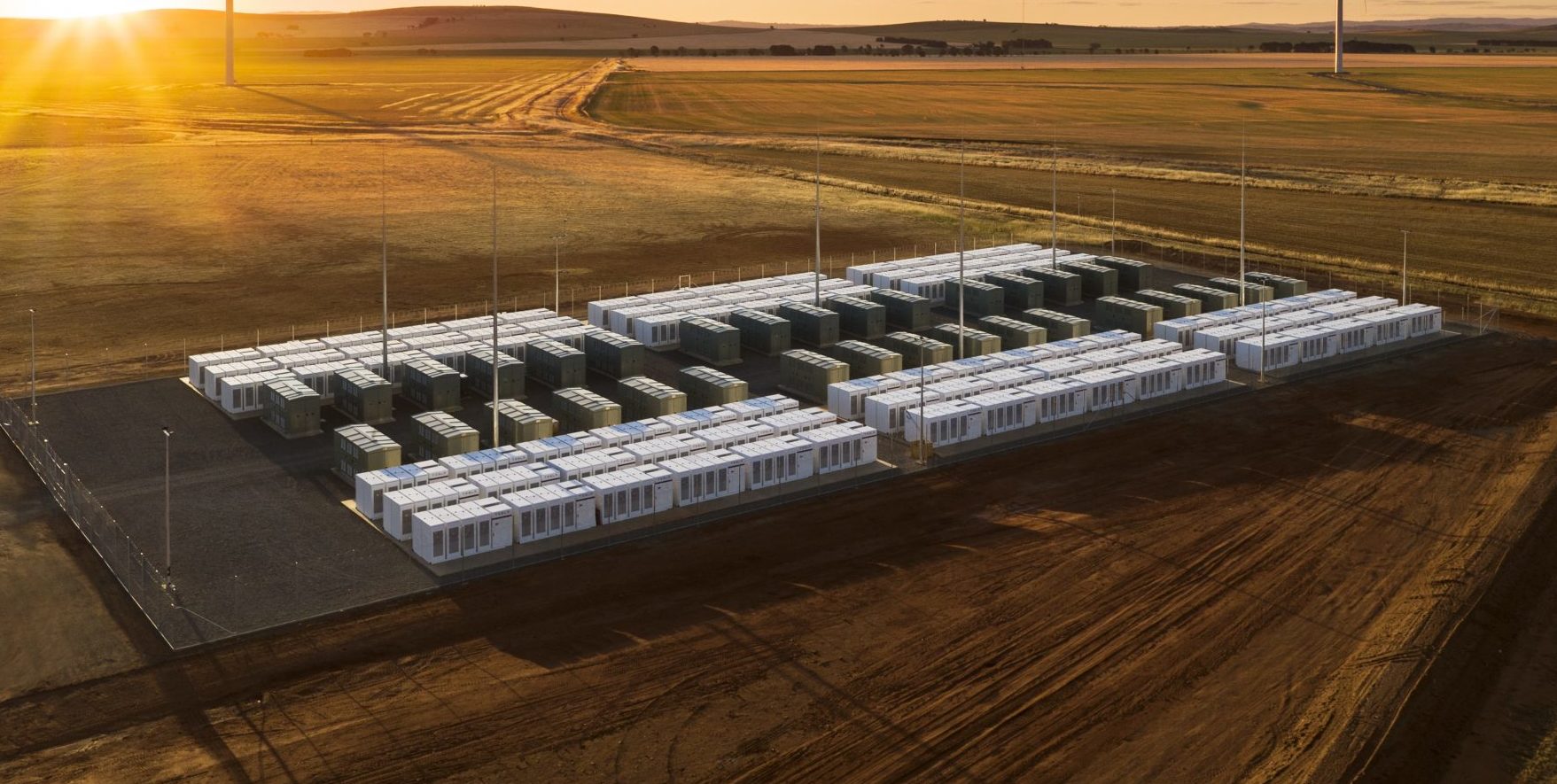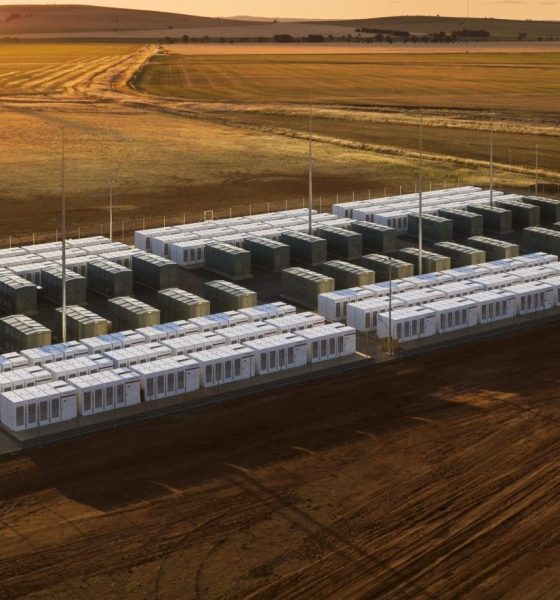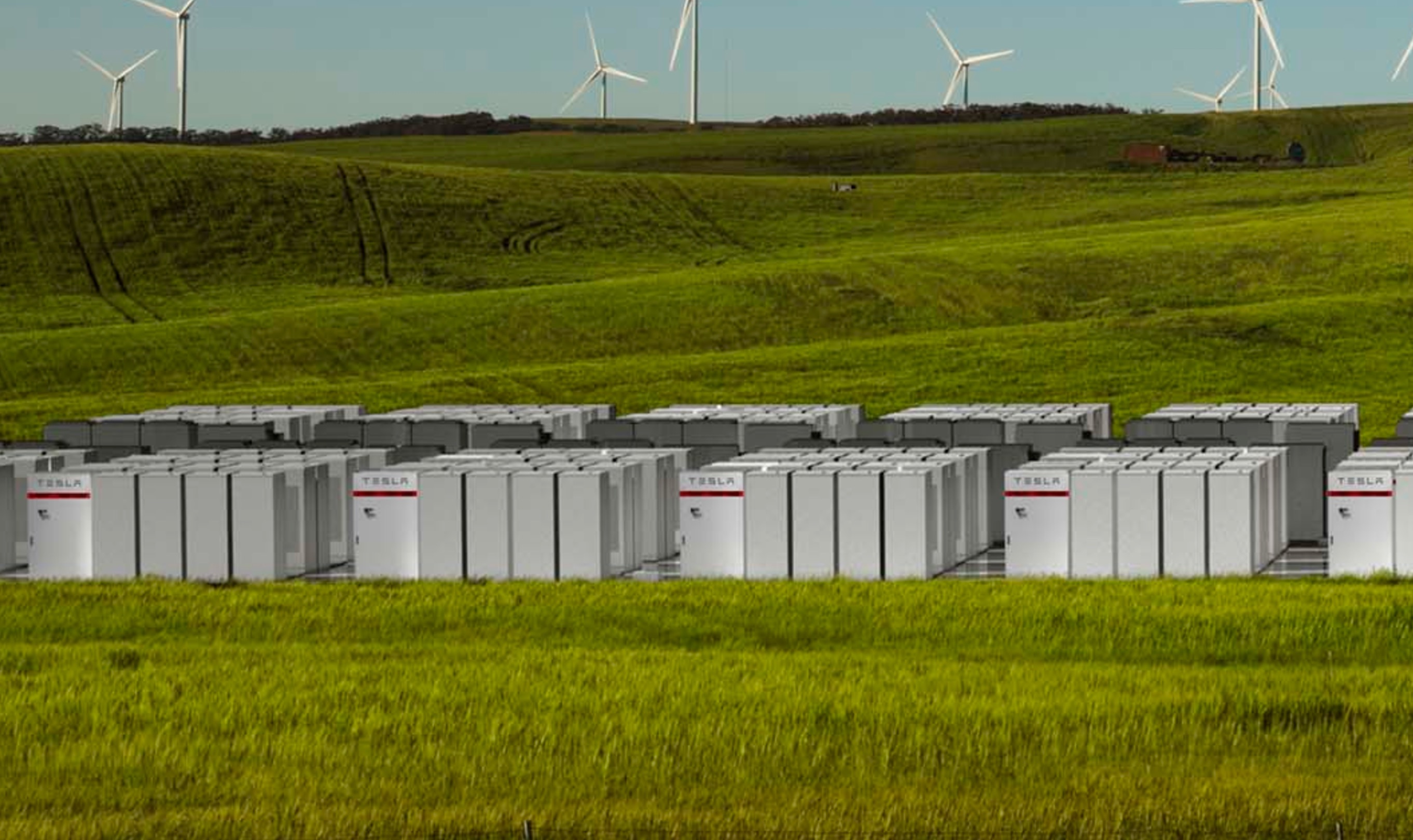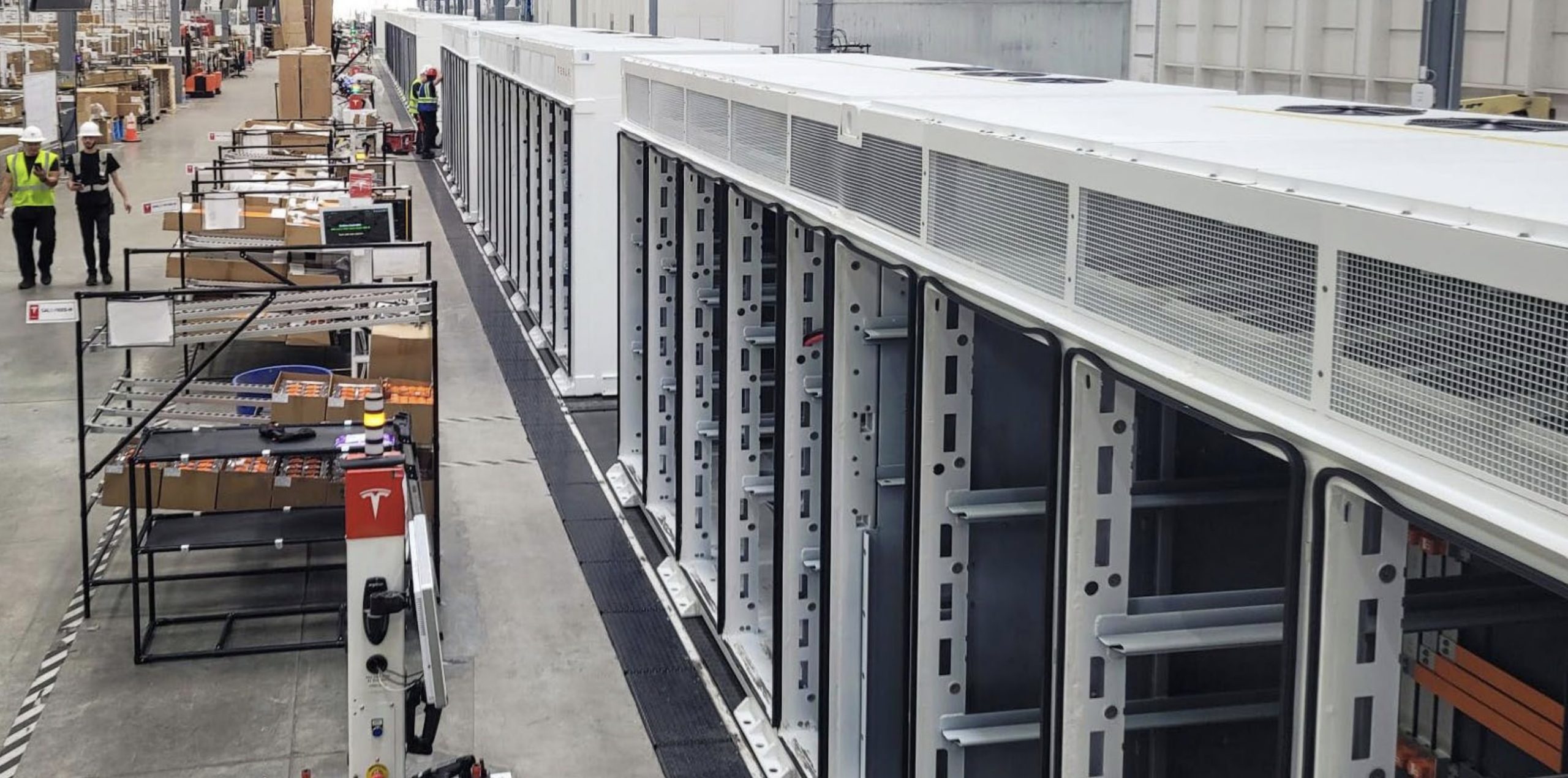

Energy
Tesla’s Powerpack battery farm starts killing fossil fuel backup plants in Australia
Since going online last year, Tesla’s Powerpack farm in South Australia has established a reputation for being a quick, clean, and efficient backup to the region’s beleaguered energy grid. As the big battery continues to prove its critics wrong, the Australian Energy Market Operator (AEMO) has announced that it would no longer be needing the services of several fossil fuel-powered plants, which supported the grid prior to the arrival of the Tesla Powerpack Farm.
AEMO’s recent initiative closes the page on a three-year-old requirement for 35 MW of Frequency Control Ancillary Services (FCAS) to be provided in South Australia during instances when the state’s grid is at risk of separating from the national grid, ensuring that the state’s grid could operate safely and securely by itself. In an announcement on Thursday, the AEMO acknowledged that the energy landscape in the region has changed during the past year.
“The operation of SA has changed significantly over the past 12 months. Synchronous unit requirements (for SA system strength) and the installation of the Hornsdale battery have ensured regulation FCAS is more readily available post-islanding of SA. Hence this requirement is no longer considered necessary,” AEMO noted.
Prior to the installation of the Tesla Powerpack farm, the local providers of FCAS turned the South Australian energy grid into a booming business. The providers, which utilize fossil fuel-powered plants, kept the price of FCAS in the state extremely high, rising nearly 100-fold to the market cap of $14,000/MWh. At one point, the cost of South Australia’s FCAS rose to around $6 million a day, and considering the strain on the region’s energy grid; the state ended up paying more than $100 million in 2016 and 2017.
The Tesla big battery, officially named as the Hornsdale Power Reserve, disrupted the market when it went online. With the Powerpack farm present, gas generators were unable to dictate the price of backup energy services. The battery farm also proved that it was quicker, more flexible, more accurate, and even more cost-effective than fossil fuel-powered plants.
The Powerpack farm’s capabilities were put to the test in late August, after twin lightning strikes resulted in the failure of two major transmission lines linking Queensland and New South Wales. The results of the lightning strikes were notable — the South Australia and Queensland grids were separated and there were widespread power losses in NSW, Tasmania, and Victoria. In South Australia, there was no loss of power, and no failure of generators due to the fast response of the Tesla Powerpack farm.

The feats of the Horsndale Power Reserve has triggered an energy movement in Australia, becoming the frontliner in AEMO’s contingencies against major faults and disturbances to the grid. New battery-based projects are currently underway in several other areas, such as Dalrymple North in South Australia, at the Ganawarra solar farm, and a Ballarat network junction in Victoria. In a statement to Renew Economy, Christian Schaefer, AEMO’s head of system capability, noted that the region’s move away from fossil fuel-powered backup plants is a step in the right direction.
“This is a good news story. The work that our engineers in the AEMO team have done shows that we can continue to operate South Australia in a stable and secure manner. Hornsdale has had a significant impact on the South Australia system, and we have got new batteries coming online with Victoria and South Australia. That is really positive. It shows that all parts of the industry — networks, generators, the renewable sector, battery providers and regulators — are getting behind this and showing an interest in what has been done,” he said.
Tesla Energy does not make as many headlines as the company’s electric car business, but the business is in a constant process of growth. In a recent statement, billionaire investor Ron Baron noted that he expects Tesla’s electric car and energy business to be equally worth $500 billion each by 2030. Tesla CTO JB Straubel, for his part, has previously teased that Tesla Energy is indeed going after backup peaker plants.
“I think what we’ll see is we won’t build many new peaker plants, if any. Already what we’re seeing happening is the number of new ones being commissioned is drastically lower, and batteries are already outcompeting natural gas peaker plants,” Straubel said.

Energy
Tesla starts hiring efforts for Texas Megafactory
Tesla’s Brookshire site is expected to produce 10,000 Megapacks annually, equal to 40 gigawatt hours of energy storage.

Tesla has officially begun hiring for its new $200 million Megafactory in Brookshire, Texas, a manufacturing hub expected to employ 1,500 people by 2028. The facility, which will build Tesla’s grid-scale Megapack batteries, is part of the company’s growing energy storage footprint.
Tesla’s hiring efforts for the Texas Megafactory are hinted at by the job openings currently active on the company’s Careers website.
Tesla’s Texas Megafactory
Tesla’s Brookshire site is expected to produce 10,000 Megapacks annually, equal to 40 gigawatt hours of energy storage, similar to the Lathrop Megafactory in California. Tesla’s Careers website currently lists over 30 job openings for the site, from engineers, welders, and project managers. Each of the openings is listed for Brookshire, Texas.
The company has leased two buildings in Empire West Business Park, with over $194 million in combined property and equipment investment. Tesla’s agreement with Waller County includes a 60% property tax abatement, contingent on meeting employment benchmarks: 375 jobs by 2026, 750 by 2027, and 1,500 by 2028, as noted in a report from the Houston Business Journal. Tesla is required to employ at least 1,500 workers in the facility through the rest of the 10-year abatement period.
Tesla’s clean energy boom
City officials have stated that Tesla’s arrival marks a turning point for the Texas city, as it highlights a shift from logistics to advanced clean energy manufacturing. Ramiro Bautista from Brookshire’s economic development office, highlighted this in a comment to the Journal.
“(Tesla) has great-paying jobs. Not just that, but the advanced manufacturing (and) clean energy is coming to the area,” he said. “So it’s not just your normal logistics manufacturing. This is advanced manufacturing coming to this area, and this brings a different type of job and investment into the local economy.”
Energy
Tesla and Samsung SDI in talks over new US battery storage deal: report
The update was related by industry sources and initially reported by South Korean news outlets.

Recent reports have suggested that Tesla and Samsung SDI are in talks over a potential partnership to supply batteries for large-scale energy storage systems (ESS).
The update was related by industry sources and initially reported by South Korean news outlets.
ESS batteries to be built at Samsung’s Indiana plant
As noted in a report from Korea JoongAng Daily, the demand for energy storage systems has been growing rapidly in North America, thanks in no small part to the surge in AI investments across numerous companies. With this in mind, Tesla has reportedly approached Samsung SDI about a potential battery supply deal.
The deal is reportedly worth over 3 trillion Korean won (approximately $2.11 billion) and will span three years, according to The Korea Global Economic Daily. A battery supply deal with Samsung SDI could make sense for Tesla as the company already has a grid-scale battery, the Megapack, which is perfect for industrial use. Samsung SDI could simply supply cells for the EV maker.
Production of the batteries would reportedly take place at Samsung SDI’s joint venture factory with Stellantis in Indiana, which is currently under construction. Samsung SDI recently announced plans to use part of that plant’s EV lines to produce cells for ESS, with a targeted capacity of 30 GWh by the end of next year.
Tesla and Samsung’s partnership
At present, only a handful of manufacturers, including Korea’s LG Energy Solution, Samsung SDI, SK On, and Japan’s Panasonic, are capable of producing energy storage-scale batteries domestically in the United States. A Samsung SDI official issued a comment about the matter, stating, “Nothing has been finalized regarding cooperation with Tesla.”
The possible energy storage system deal adds another layer to Tesla’s growing collaboration with Samsung, which is already in line as a partner in the upcoming production of Tesla’s AI5 and AI6 chips. Early sample manufacturing of the AI6 is expected to begin in South Korea, with mass production slated for Samsung’s Texas-based Taylor foundry when it starts operations.
The AI6 chip will power Tesla’s next wave of high-volume projects, including the Optimus humanoid robot and the autonomous Cybercab service. Musk has called the partnership with Samsung a “real collaboration,” adding that he personally plans to “walk the line” at the Taylor facility to speed up progress.
Energy
Tesla VP hints at Solar Roof comeback with Giga New York push
The comments hint at possible renewed life for the Solar Roof program, which has seen years of slow growth since its 2016 unveiling.

Tesla’s long-awaited and way underrated Solar Roof may finally be getting its moment. During the company’s Q3 2025 earnings call, Vice President of Energy Engineering Michael Snyder revealed that production of a new residential solar panel has started at Tesla’s Buffalo, New York facility, with shipments to customers beginning in the first quarter of 2026.
The comments hint at possible renewed life for the Solar Roof program, which has seen years of slow growth since its 2016 unveiling.
Tesla Energy’s strong demand
Responding to an investor question about Tesla’s energy backlog, Snyder said demand for Megapack and Powerwall continues to be “really strong” into next year. He also noted positive customer feedback for the company’s new Megablock product, which is expected to start shipping from Houston in 2026.
“We’re seeing remarkable growth in the demand for AI and data center applications as hyperscalers and utilities have seen the versatility of the Megapack product. It increases reliability and relieves grid constraints,” he said.
Snyder also highlighted a “surge in residential solar demand in the US,” attributing the spike to recent policy changes that incentivize home installations. Tesla expects this trend to continue into 2026, helped by the rollout of a new solar lease product that makes adoption more affordable for homeowners.
Possible Solar Roof revival?
Perhaps the most intriguing part of Snyder’s remarks, however, was Tesla’s move to begin production of its “residential solar panel” in Buffalo, New York. He described the new panels as having “industry-leading aesthetics” and shape performance, language Tesla has used to market its Solar Roof tiles in the past.
“We also began production of our Tesla residential solar panel in our Buffalo factory, and we will be shipping that to customers starting Q1. The panel has industry-leading aesthetics and shape performance and demonstrates our continued commitment to US manufacturing,” Snyder said during the Q3 2025 earnings call.
Snyder did not explicitly name the product, though his reference to aesthetics has fueled speculation that Tesla may finally be preparing a large-scale and serious rollout of its Solar Roof line.
Originally unveiled in 2016, the Solar Roof was intended to transform rooftops into clean energy generators without compromising on design. However, despite early enthusiasm, production and installation volumes have remained limited for years. In 2023, a report from Wood Mackenzie claimed that there were only 3,000 operational Solar Roof installations across the United States at the time, far below forecasts. In response, the official Tesla Energy account on X stated that the report was “incorrect by a large margin.”









